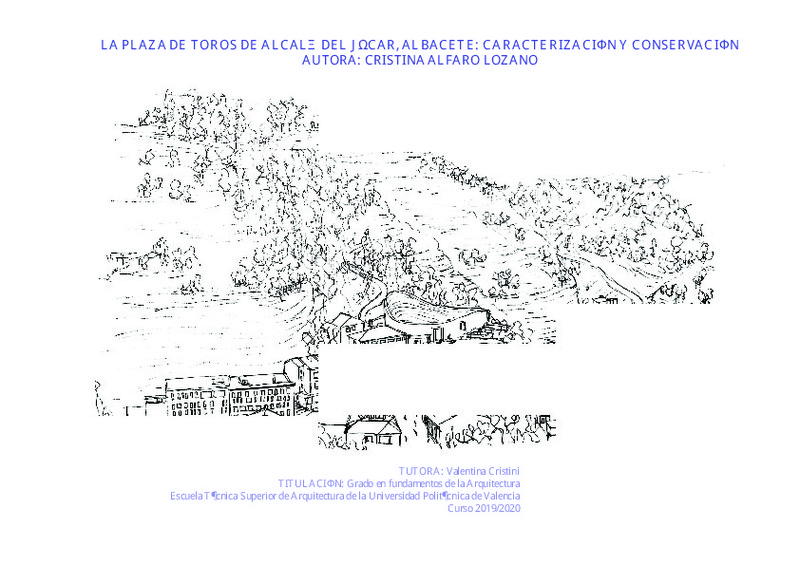JavaScript is disabled for your browser. Some features of this site may not work without it.
Buscar en RiuNet
Listar
Mi cuenta
Estadísticas
Ayuda RiuNet
Admin. UPV
La plaza de toros de Alcalá del Júcar, Albacete: caracterización y conservación.
Mostrar el registro completo del ítem
Alfaro Lozano, C. (2020). La plaza de toros de Alcalá del Júcar, Albacete: caracterización y conservación. Universitat Politècnica de València. http://hdl.handle.net/10251/171143
Por favor, use este identificador para citar o enlazar este ítem: http://hdl.handle.net/10251/171143
Ficheros en el ítem
Metadatos del ítem
| Título: | La plaza de toros de Alcalá del Júcar, Albacete: caracterización y conservación. | |||
| Autor: | Alfaro Lozano, Cristina | |||
| Director(es): | ||||
| Fecha acto/lectura: |
|
|||
| Resumen: |
[ES] La arquitectura de tierra resulta ser una técnica de construcción responsable con el medio ambiente y de fácil acceso. Promueve la explotación de recursos locales y contiene propiedades de aislamiento acústico y ...[+]
[EN] Earthen architecture turns to be an environmentally responsible construction technique that is easily accessible. Promotes the exploitation of local resources and contains acoustic and thermal insulation properties. ...[+]
|
|||
| Palabras clave: |
|
|||
| Derechos de uso: | Reserva de todos los derechos | |||
| Editorial: |
|
|||
| Código del Proyecto: |
|
|||
| Titulación: |
|
|||
| Tipo: |
|
recommendations
Este ítem aparece en la(s) siguiente(s) colección(ones)
-
ETSA - Trabajos académicos [4678]
Escuela Técnica Superior de Arquitectura







